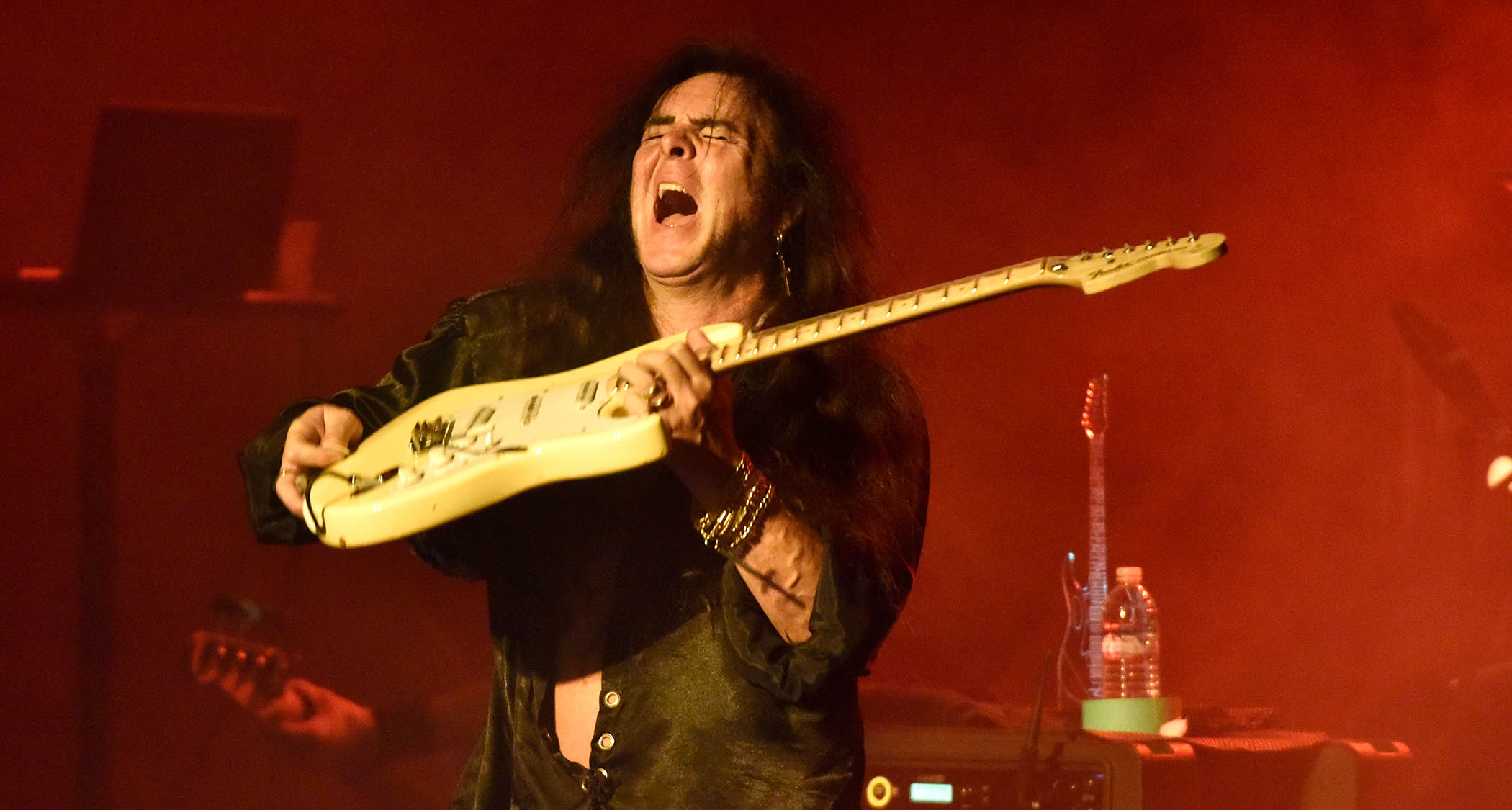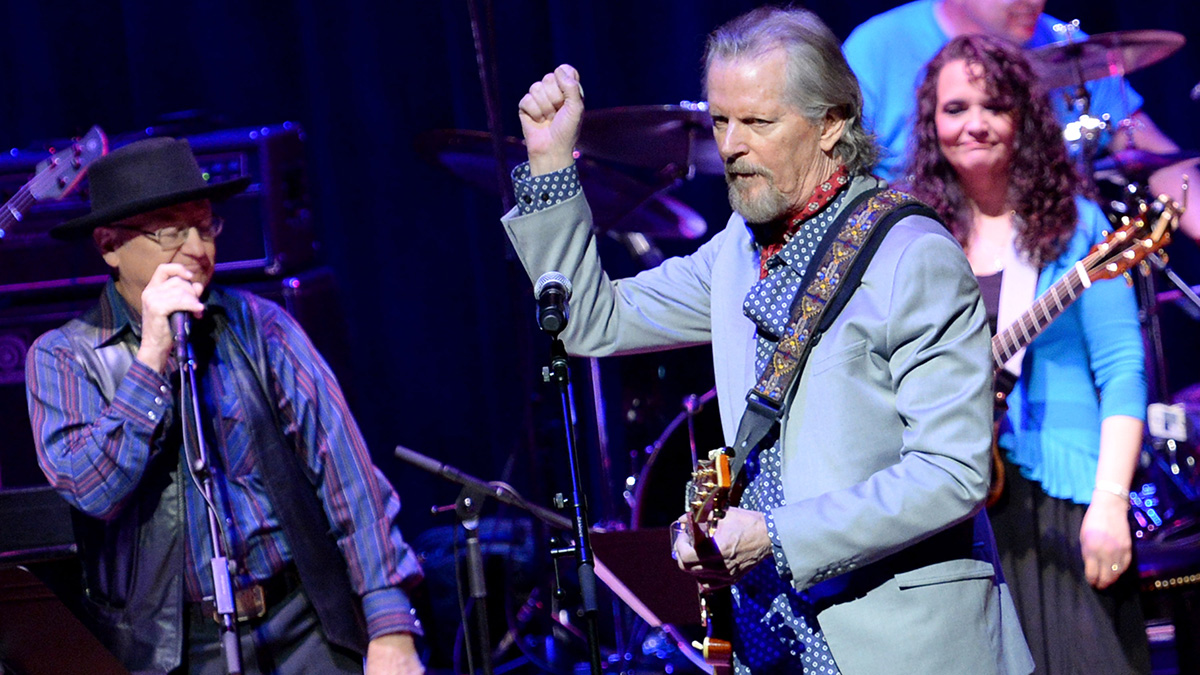“It’s such a beautiful instrument. I think when people started hacking them up and putting humbuckers in them, it ruined the look”: Yngwie Malmsteen explains what makes the Stratocaster the perfect electric guitar (and why he scalloped the frets anyway)
While everyone else was ripping on Charvels, Malmsteen was going far beyond the sun with a traditional three single-coil Strat. Why? Because it is “the pinnacle” of the electric guitar

If we think of Yngwie Malmsteen as this sort of Arthurian knight figure of guitar, a neoclassical bolt from the heavens made flesh and bone, then he of course would need an Excalibur to execute his daily business – and for the Swedish virtuoso, that has always been and forever will be the Fender Stratocaster.
All kinds of players have picked up a Strat. It is so versatile. Its ergonomics are so amendable to human physiology. It is a miracle of design. None have taken the Strat to the places Malmsteen has taken it, right out there past the great beyond, rendering arpeggios through the ether of time and space, Niccolò Paganini’s influence echoing an eternity through a massed wall of Marshall amps.
With the Strat celebrating 70 trips around the sun, we checked in with Guitar World cover stars of yore to talk about the Stratocasters they were pictured with on their various cover shoots, and inevitably we come to Mr Yngwie J. Malmsteen, shred god, far beyond driven, and, as it turns out, a connoisseur of the traditional Stratocaster aesthetic…
Where and when did you get these Strats?
“I probably got the ’70s Strat [1986 cover] somewhere in L.A. the day before the shoot. The Candy Apple Red Strat [1987 cover] wasn’t even mine! It was just something that was probably lying around in the studio. [Editor’s note: While editing this feature, we noticed that on page 6 of the January 1987 issue, it says, ‘1964 Candy Apple Red Fender Strat graciously provided by Mr. Danny Shea of New York City for this shoot.’ We would have shared this info with Yngwie, but our interview took place about a month before we made this Sherlock Holmesian discovery. – Damian Fanelli]”
Why did you choose these Strats for your GW photo shoots?
“The Sunburst was just a guitar I had because I got it the day before, so I said, ‘Well, I’ll just use this.’ But it’s funny because I didn’t really use guitars with rosewood necks, and I think I changed the neck out for a maple one later. The red one, like I said, wasn’t mine; it was just there. If you look at it, the neck isn’t even scalloped; it’s not like a guitar I’d play.”
Get The Pick Newsletter
All the latest guitar news, interviews, lessons, reviews, deals and more, direct to your inbox!
Did you use the ’70s Strat on any notable recordings?
“No, I don’t think I did. Back then, I started getting really into the ’60s Strats. It was weird because the trend was to use Charvels, which were really good guitars, and stuff like that. I was really into the way things looked. I was on the road, and I found this 1956 Strat, and I got it for, like, nothing. Nobody wanted it, and I used it for a long time. I also bought a ’60 or ’61 Strat in L.A. not long before a magazine photoshoot, and I started using that a lot, too.”
Do you still own the ’70s Strat?
“I probably still own it, but I think I swapped the neck.”
Did it feel odd using older Strats in an era when hot-rod guitars were so popular?
“Yes and no; the funny thing is I was never too concerned with what other people did. As far as what kind of equipment I gravitated toward, I probably was the only person on the planet who didn’t use the Floyd Rose or humbucking pickups. Even with scalloped frets – I did it because it felt natural. I didn’t want to cheat. It ain’t broke, don’t fix it. That was my philosophy.”
Aside from the scalloped frets, why didn’t you modify your Strats much?
“The thing that I always considered, which is very important, is that it really, truly is a thing of beauty. It’s such a beautiful instrument. It’s amazing. I think when people started hacking them up and putting humbuckers in them and stuff, it ruined the look.
“I did some things, like put bigger frets and scallops on the guitars, but other than that, I kept them stock. And I never understood what the problem was with the tremolos. It never goes out of tune for me!”
I think when people started hacking them up and putting humbuckers in them and stuff, it ruined the look
Why did you start scalloping the frets?
“The principle [and] the concept of scalloping, it’s just a different way of getting to that point. I’m a ‘more is more’ kind of person, so I scalloped the neck really deeply and put high frets on it, so I’m just a freak all around.
“When I was a little kid, I didn’t really spend much time in school because I had to play guitar; that was more important to me than going to school. Funnily enough, I had straight A’s anyway!
“Since I didn’t really go to school, they said, ‘You go to this luthier shop; they need somebody to teach,’ so I said, ‘Why not?’ They were wearing lab coats and working on 17th-century violins and stuff like that. It was very high-tech and high-level. And this old instrument came in, and it had this scalloped look to it.
“As a kid, I was interested in model planes and things like this; I didn’t mind cutting stuff up and changing my [guitar’s] neck. So I just scalloped between the frets and said, ‘Wow, this is kind of cool,’ because the wood didn’t get in your way.
“I started doing that little by little on my better guitars, and the funny thing is, I didn’t know that other people actually did that too. I had no idea because there was no way I’d find that information in the 1970s in Sweden.”
You mentioned you didn’t use rosewood-necked Strats much. Why did you prefer maple? Is it because maple has a snappier sound?
“You’re gonna laugh at this. I think it looked better. [Laughs] I think the big headstock looks better, too. It’s a better-looking guitar! I actually like rosewood necks; I like a white cream Strat with a roasted neck; it looks superb. I don’t dislike them by any stretch. I have many of them. I love them, but I guess I also prefer the snappier sound [of maple]. Yeah, you’re right; maple seems to be a little snappier.”
Leo Fender was the Thomas Edison of guitars
I get the feeling you’re almost one with the Strat. Why is that the case?
“Leo Fender was the Thomas Edison of guitars. He didn’t even know how to play an E chord; he wasn’t a guitar player, but the contoured body and the horn that goes higher on one side than the other – it’s all about weight distribution. You put it on your knee, and it won’t fall back or fall forward; it’s perfect. It just feels perfect.
“The limitation, I would say, would be in the pickups. If you turn it up, it’s going to start humming a lot. But I was so in favor of the way the guitar looked that I refused to put humbuckers in. I wasn’t really a big fan of that; I was more of a fan of the more direct tone of the Strat. It’s very unforgiving, and the instrument is very unforgiving.
“It’s got a longer scale and a smaller radius neck. You can have the action as low as you can, but the string is going to be tougher. It’s just harder work, but it seems to me that everybody who plays them has a very personal sound, whereas a lot of people who play other instruments have a little less.”
Where would you be without the Fender Stratocaster?
I think the instrument, obviously, to me, was the pinnacle of an instrument
“It’s an interesting question. It’s the same thing as asking where you think I would have been if I didn’t come to America. I think that one way or the other, I would have found my way to the point that I am now because I was just so relentless, and I am actually still [relentless].
“It’s really funny. I wake up every day and have this relentless drive; it’s ridiculous. I think the instrument, obviously, to me, was the pinnacle of an instrument. I worked really hard to buy my first one, and then, of course, when I had the honor of having not only a signature model and the first one but also a 30th-anniversary signature model with Custom Shop and a tribute model, and so on.
“I’m extremely honored by that. When you persevere and stay true to your vision, you will always find that at the end of the rainbow, there’s something there for you.”
Andrew Daly is an iced-coffee-addicted, oddball Telecaster-playing, alfredo pasta-loving journalist from Long Island, NY, who, in addition to being a contributing writer for Guitar World, scribes for Bass Player, Guitar Player, Guitarist, and MusicRadar. Andrew has interviewed favorites like Ace Frehley, Johnny Marr, Vito Bratta, Bruce Kulick, Joe Perry, Brad Whitford, Tom Morello, Rich Robinson, and Paul Stanley, while his all-time favorite (rhythm player), Keith Richards, continues to elude him.
“What blew me away was that everyone wanted the curly maple top. People were calling, saying, ‘I’ve got to have the bird inlays’”: Paul Reed Smith on raising the Standard 24, finally cracking the noise-free guitar and why John Sykes is a tone hero
“It combines unique aesthetics with modern playability and impressive tone, creating a Firebird unlike any I’ve had the pleasure of playing before”: Gibson Firebird Platypus review







![[from left] George Harrison with his Gretsch Country Gentleman, Norman Harris of Norman's Rare Guitars holds a gold-top Les Paul, John Fogerty with his legendary 1969 Rickenbacker](https://cdn.mos.cms.futurecdn.net/TuH3nuhn9etqjdn5sy4ntW.jpg)





